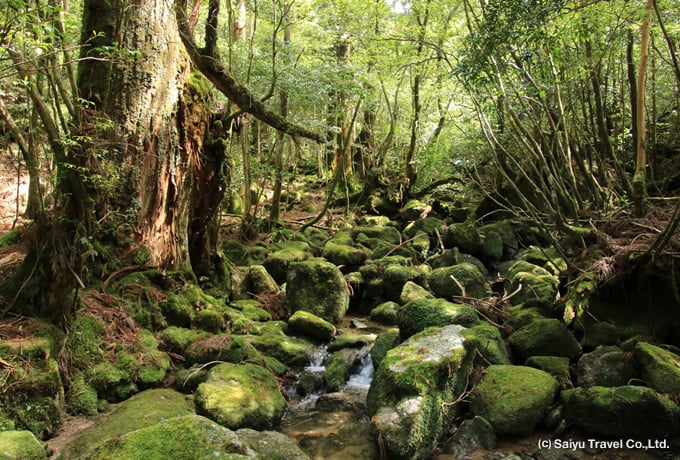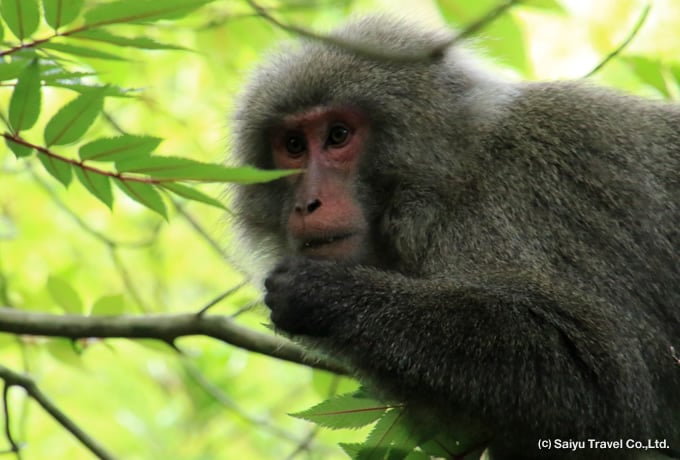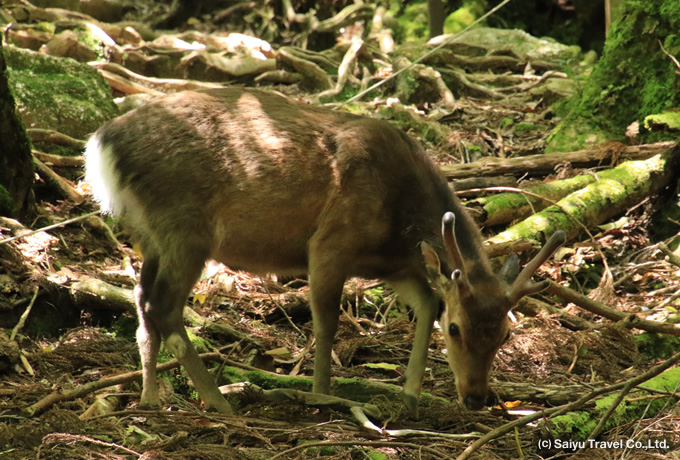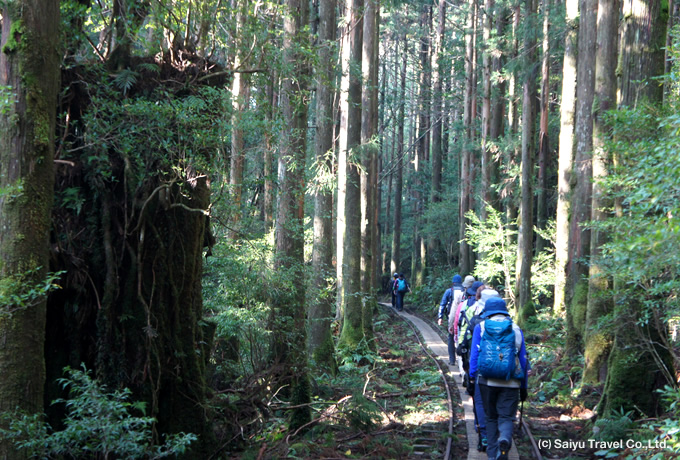- Yakushima & Amami Oshima
~Nature Experience~ - Kagoshima , Japan
- Yakushima is a nature lover's paradise of untouched ancient cedar forests,
including one of the oldest trees in the world.
- Price
- Please contact us
- Period
- 5nights 6days
- Season
- Anytime
Highlights
- Hike and take pictures at Shiratani Unsui Gorge on Yakushima
The Shiratani Unsui Gorge is a trekking area where one can walk through the virgin forests of the World Heritage site, Yakushima. It is most famous place in Japan for the green moss, covering everything from stones and the roots of the trees, creating a dream-like world. It said that the forest in Studio Ghibli's Princess Mononoke was modeled after this magical forest. The moss grows on everything, creating a green world as far as the eye can see. - Experience the subtropical nature of Amami Oshima on kayak
Located almost directly between mainland Kagoshima and Okinawa Island, Amami Oshima is sometimes called the “Galapagos of Asia.” With beautiful emerald green waters, virgin mangrove forests, and boasting many photogenic, scenes, the nature on this island offers an enjoyable experience.. Walk through the Kinsakubaru virgin forest, full of plants that are unique to the subtropics. Enjoy kayaking through the virgin mangrove forests where you can experience the fresh vitality of tropical nature. Those who are new to kayaking can also learn how to paddle while joining in the adventure.
About Yakushima
World Heritage site (世界遺産)
Yakushima was officially registered as Japan’s first World Natural Heritage site in 1993 after it was valued highly for its large number of endemic species, its unique ecosystem and outstanding natural scenery. The UNESCO World Heritage Center said, “The value of Yakushima as a natural heritage is in the fact that the outstanding nature is preserved, despite the large number of people inhabiting it.”Yakusugi (屋久杉)
The cedar trees in Yakushima over the age of 1000 years are called “Yakusugi.” Generally, the age of cedar trees is about 500 years at most, however Yakusugi have an exceptionally long lifespan. Due to Yakushima’s unique topography and weather, there are a lot of cedar trees over 1000 years old. Among them, “Jōmonsugi” is famous for being the largest tree which represents the Yakusugi. The age of this tree is said to be 7200 years. Jōmonsugi was discovered by locals in 1966 and is now a symbol of the natural world.Climate & Weather
It is common for Yakushima to experience rain throughout the year. Rain is a symbol of Yakushima and the rain gives birth to the magnificent nature, so let’s enjoy Yakushima including the rain! You might be wondering when is the best season to visit? You might have an image that it is during the summer, but you can enjoy it anytime regardless of the season. However, for the winter months of December to early March, there is a possibility of snow in the mountains of Yakushima. In that case, it will be for intermediate level individuals, and equipment as well as technique will become necessary.Itinerary
| City | Summary | |
|---|---|---|
| 1 | Amami Oshima |
Arrive at any time. There are no plans until the evening welcome meeting, so spend some time exploring. Meet your local guide who will assist you during your stay.
Amami Oshima|Meals offered:Dinner |
| 2 | Amami Oshima | Mangrove sightseeing by kayak in the morning (approx. 1.5 hours.) Visit places only accessible by kayak, allowing you to see rare nature and wildlife up-close. For lunch, enjoy a local dish known as “keihan,” a dish of seasoned chicken with rice. In the afternoon, head to the Kinsakubaru virgin forest, full of subtropic broad-leaved trees, and take a pleasant stroll among the precious flora and fauna that are unique to the subtropics. For dinner, you will be treated to the island’s cuisine as you enjoy traditional Amami Island folk music and dance. Take the ferry at night to Yakushima (21:20).
Amami Oshima|Meals offered:Morning, Dinner |
| 3 | Yakushima | After arriving to Yakushima (4:40), take a private car to Shiratani Unsui Gorge. *Trekking in Shiratani Unsui Gorge (Approx. 6 hours/6 km) Walk through this dream-like, moss-covered world as you head for Yakushima's best scenic point, Drum Rock. Yakushima |Meals offered:Morning, Dinner |
| 4 | Yakushima | Take a private car to the Nakama Gajumaru to see one of Japan's top one hundred waterfalls, the impressive Ohko Waterfall. After that, drive through the Seibu Shindo Forest Path which is located within Yakushima's World Heritage site. On the way, stop by a beach, known for being the number one breeding ground in Japan for sea turtles. In the afternoon, hike to the serpentine cedar in Yakusugi Land (Approx. 2.5 hours round-trip.) *Arrangements can be made for those interested in the round-trip trekk to Jomonsugi. Yakushima|Meals offered:Morning, Dinner |
| 5 | Yakushima | Take a private car to Yakushima Airport.
Meals offered:Morning |
Price
Season: Anytime| Number of people | Price per person | |
|---|---|---|
| Tour cost | 6(2triple room) | Please contact us |
| 4 (2twin/double rooms) | Please contact us | |
| 2(twin/double room) | Please contact us | |
| Single room supplement | Please contact us | |
**To allow our guests to spend quality time we only allow small groups to join us.
Including :
Accommodation | English Speaking Guide | Private Transportation | Meals (Breakfasts, Dinners) | All entry feesClimate/weather
It is common for Yakushima to experience rain throughout the year. Some parts receive nearly 10 meters of rainfall annually. But rain is a symbol of Yakushima and it gives birth to its magnificent nature. The forests are beautiful in the rain, so enjoy it, but if it is sunny, that also will be great!Best Time to Visit
Spring - March to May
The weather is starting to warm up and it is a nice season for hiking. Since it is before the summer season, there are fewer people and walking in the mountains and forests will be quiet and comfortable. Also, beautiful rhododendron flowers are widely in bloom from May to June.
Rainy Season - June to July
It rains a lot in Yakushima throughout the year. But during the rainy season, it rains even more. Especially June and July are the months with the highest amount of annual rainfall. If you are expecting a sunny Yakushima, it would be better to visit during another season. However, after the rain, the abundant moss that paints Yakushima in green is a beautiful sight to behold. Even if it rains, if you go trekking after the rain lets up, you will find yourself in a magical forest. If such moments are what you are after, the rainy season may be the best time for you to visit.
Summer - August to September
Summer is the busiest time of the year on Yakushima. A lot of people come during summer vacation and Obon (Summer holiday season). In addition to mountain climbing, kayaking, and diving are also popular during this season.
Autumn - October to November
This is the season when the temperature and humidity drop so walking becomes easier. Some consider this season the ideal time for hiking on Yakushima (the trails are much quieter). Also, during this season the beautiful colors of autumn leaves can be seen.
Winter - December to February
It is the off-season, so there will be less people. For the winter months of December to February, there is a possibility of snow in the mountains of Yakushima. In that case, trekking will be for intermediate level individuals, and equipment as well as technique will become necessary.
One of the charms of Yakushima are the different faces it shows to you every day throughout the year. Choosing the best season to visit may be about deciding on what you want to experience during your stay.
3rd floor, Kyodo Bldg. jimbocho, 2-2, Kanda, jimbocho, Chiyoda-ku, Tokyo 101-0051, Japan |Travel Agency Registration No. 607






